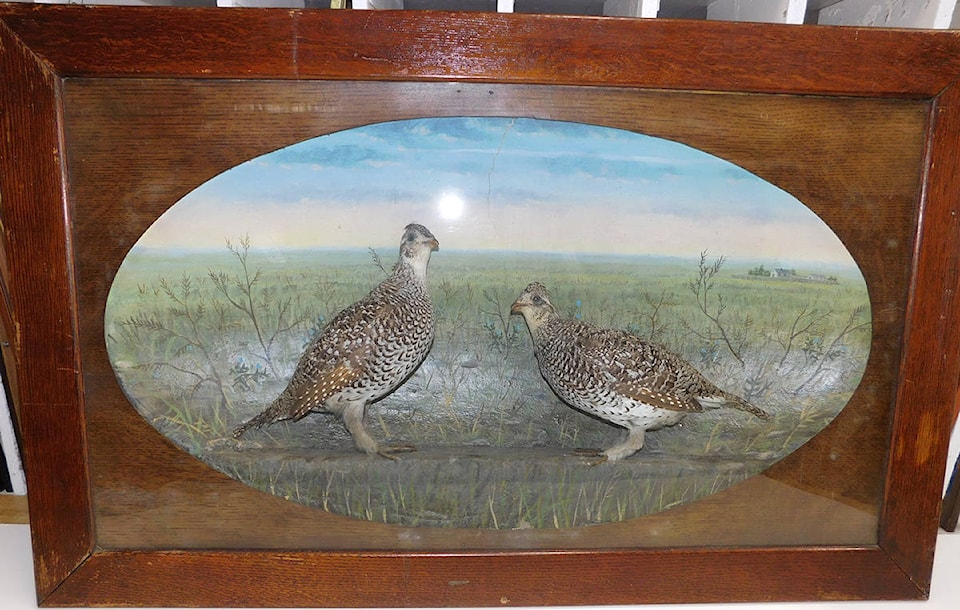Montana Stanley | Contributed
As we continue our inventory of the collections here at the Sooke Region Museum, we have encountered some peculiar donations which have come in over the years.
Taxidermy may have a taboo reputation in the region among some. However, when we hosted a taxidermy workshop last year, the interest was staggering. Many taxidermy examples exist in our collection, thanks to those who sought to preserve, study, or appreciate certain species.
READ: Fabled Sookesquatch lives in imaginations
A notable example is the pair of large “diorama” pictures hung in the Bryant home on Grant Road in the 1950s.
Each diorama features two taxidermy ptarmigans in a wooden frame. Centred behind the birds is an oval painted backdrop. What may not see at first is that the oval extends backward beyond the frame, providing room for the birds to be mounted.
The birds are mounted on a wooden strip running along the bottom of the oval “bulb” structure. With the birds being three-dimensional and the rest of the picture appearing to have a two-dimensional backdrop, the birds stand out and look quite lively.
Sam Whittaker, who was married to Christina Irvine, the first teacher at Sooke’s first school in 1870, made impressive work on the birds’ taxidermy. Gladys Shrapnel painted the backdrops depicting a dreamy sunset scene of a distant farmhouse with foliage or a forest in another. It is rumoured that Gladys was the daughter of the fellow who invented shrapnel, so the story goes.
A necklace made of human hair, which can be found in our dress display, is not an everyday accessory today, but it was all the rage in the Georgian era.
This hair jewelry piece came from Scotland to Canada circa 1800 to 1830 with the donor’s ancestors.
The jewelry was received by mail at the Sooke Region Museum the year it opened in 1977.
The necklace is made of blonde hair. Five strands are woven together to form a net-like open mesh tube with a thin brown cord inside to keep it from stretching. Two metal, possibly brass, bands divide the length of the necklace in thirds. A fastener is made up of the same metal. It is attached to an intricate three-part pendant, consisting of three wooden beads, one oval and two round. The beads are covered with hair, wound through a hole in the middle and back over the outside of the bead. A thin, delicate cord of braided hair fastens the two round beads to the oval one.
In our artifact storage, another intriguing artifact is a whale’s eardrum, found on a beach near Coal Creek (Kirby Creek) by W.J. Shannon in the 1930s. The artifact, made of dense, yellowed bone, is seashell-shaped, with a smooth texture inside and a rougher texture over the outside. Its length overall is approximately 12.7x8 cm wide and 7.2 cm high.
Our permanent galleries on the museum’s main floor are open Tuesdays to Saturdays 9:30 a.m. to 5 p.m. Come and tour the displays and see what other intriguing artifacts you can find.
•••
Montana Stanley is the Sooke Region Museum’s collections and exhibits manager.
